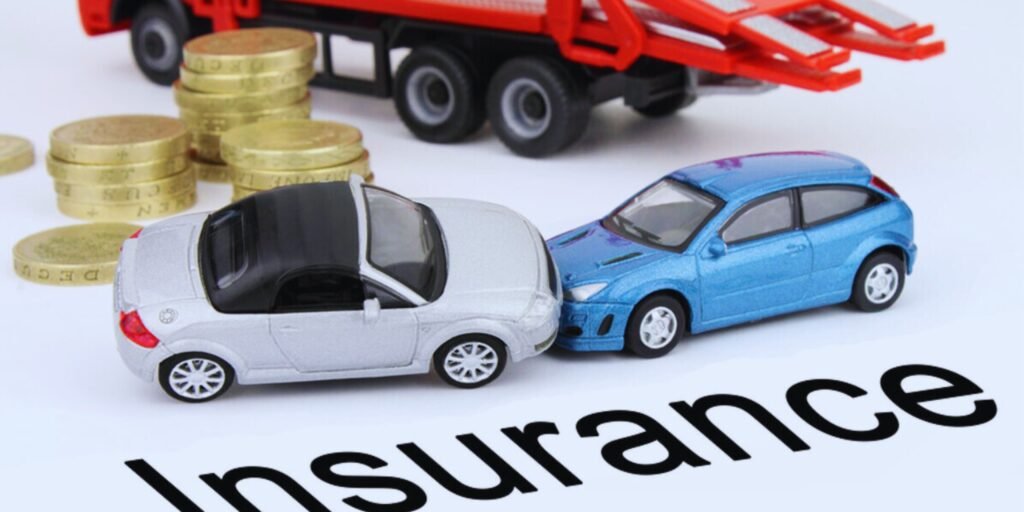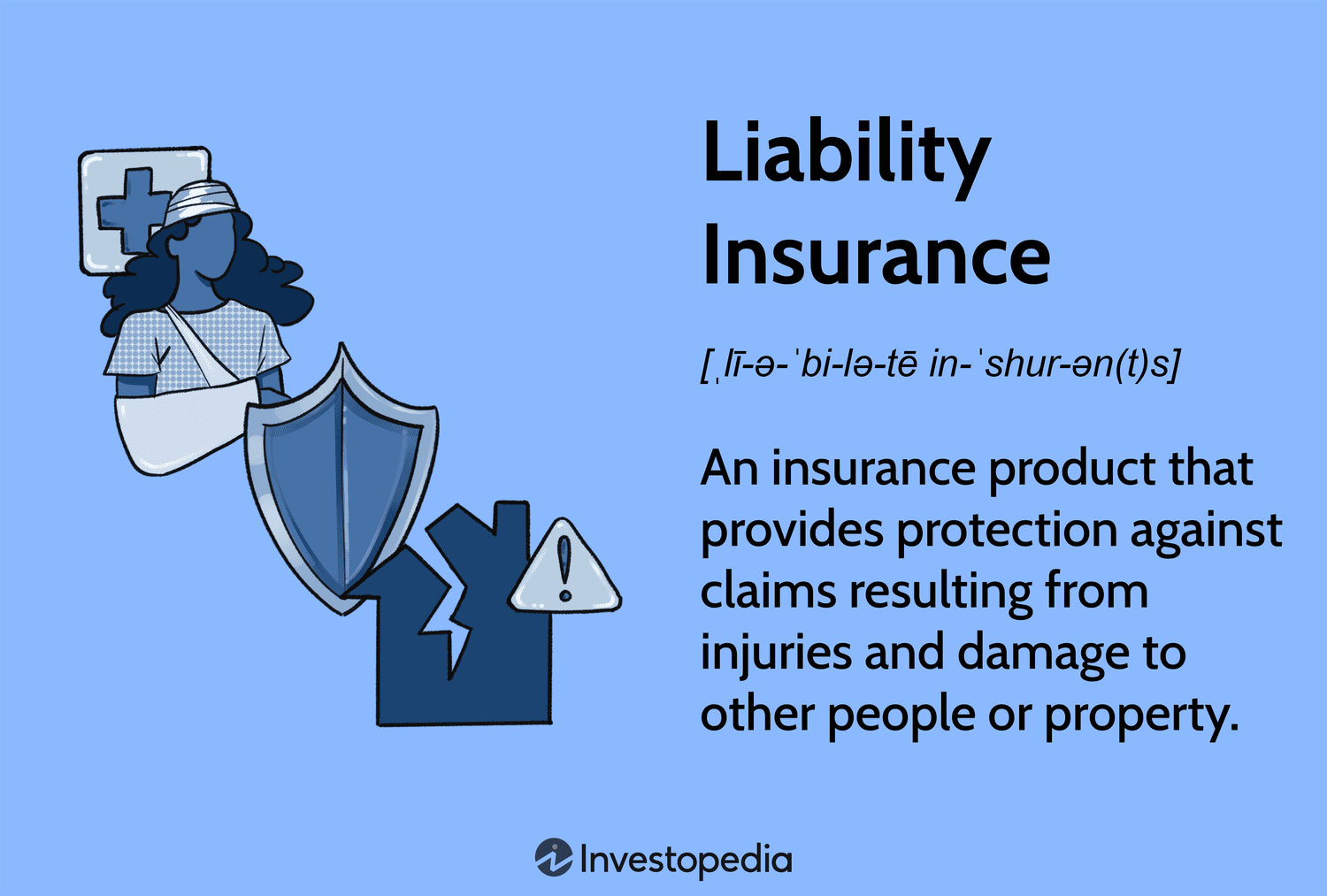If you own a car in the United States, All Car Insurance Companies in USA you’re probably aware of the importance of having car insurance. It’s not just a legal requirement in most states; it’s also a crucial financial safeguard. But with so many car insurance companies to choose from, how do you pick the right one for your needs? In this comprehensive guide, we’ll take you through the major car insurance companies in the USA, All Car Insurance Companies in USA helping you make an informed decision about your coverage.
Assessing Your Coverage Needs
To make a well-informed choice about your car insurance, All Car Insurance Companies in USA it’s crucial to assess your unique coverage needs. Here are some specific factors to consider:
Vehicle Type
The type of vehicle you own plays a significant role in determining your insurance rates. Generally, insuring a luxury or sports car will be more expensive than a standard sedan due to higher repair and replacement costs.
Driving Habits
Your driving habits, including the number of miles you drive annually and your daily commute, can impact your premium. All Car Insurance Companies in USA If you drive less frequently or work from home, you might qualify for lower rates.
LocationYour geographical location matters. Urban areas typically have higher insurance rates due to increased traffic congestion and a higher likelihood of accidents and theft. Conversely, rural areas tend to have lower rates.
Personal Factors
Your age, marital status, and even your credit score can influence your insurance rates. Younger, single drivers and those with lower credit scores often face higher premiums.
Deductible Preferences
Your deductible is the amount you’re responsible for paying before your insurance coverage kicks in. Choosing a higher deductible can lower your premium, but it means you’ll pay more out of pocket if you have a claim.
Future Needs
Consider your long-term insurance needs. If you plan to add a new driver to your policy (such as a teenager), or if you anticipate changes in your driving habits, discuss these scenarios with potential insurers to ensure your policy can accommodate them.
Finding the Right Balance
When seeking car insurance, aim for a balance between affordability and adequate coverage. While it’s tempting to opt for the lowest premium available, inadequate coverage can leave you financially vulnerable in the event of an accident. Conversely, purchasing excessive coverage can lead to unnecessarily high premiums.
The Importance of Regular Reviews
Your insurance needs can change over time. It’s essential to revisit your policy annually or whenever you experience significant life changes, such as getting married, moving, or buying a new car. An insurance policy that was perfect for you a few years ago might not meet your current needs.
Additional Considerations When Choosing Car Insurance
Policy Exclusions and Limitations
Understanding what your policy covers and, more importantly, what it doesn’t cover is crucial. Policies often have exclusions and limitations. For instance, many policies exclude coverage for intentional acts, racing, or using your car for commercial purposes. Make sure you’re aware of these exclusions to avoid surprises when you need to file a claim.
Claims Process
Before committing to an insurance provider, inquire about their claims process. A streamlined and efficient claims process can greatly reduce the stress and inconvenience you might face after an accident. Ask about their preferred repair shops and how quickly they settle claims.
Customer Reviews and Ratings
Online reviews and ratings from other policyholders can provide valuable insights into an insurance company’s reputation. Look for reviews regarding customer service, claims handling, and overall satisfaction. Keep in mind that no company is immune to negative reviews, but patterns of consistent dissatisfaction should be a red flag.
Coverage for Special Situations
If you have unique circumstances, such as owning a classic car, using a ridesharing service, or needing non-owner insurance, make sure the insurance company can accommodate these needs. Specialized coverage might be necessary for such situations.
Financial Stability
As mentioned earlier, checking the financial strength of an insurance company is crucial. You want to be confident that they can meet their financial obligations, especially in the event of a widespread disaster or economic downturn.

Discount Availability
In addition to the standard discounts mentioned earlier, some companies offer unique discounts for hybrid or electric vehicle owners, military personnel, or even for being a loyal customer. Inquire about all potential discounts that might apply to you.
Staying Informed and Making Informed Choices
Car insurance is not a one-and-done decision. It’s a commitment that requires ongoing attention. Here’s how to stay informed:
Annual Reviews: As mentioned earlier, review your policy annually, even if your circumstances haven’t changed. Your insurer may have adjusted their rates or added new discounts.
Stay Informed About Changes in Regulations: Laws and regulations related to insurance can change. Stay informed about any updates in your state’s requirements.
Keep a Clean Driving Record: Safe driving is not only essential for your safety but also for maintaining lower insurance rates. Avoiding accidents and traffic violations can help keep your premiums down.
Shop Around: Don’t hesitate to shop around for better rates, even if you’re happy with your current insurer. Loyalty doesn’t always translate to lower costs.
Consider Bundling: If you have other insurance needs like home, renters, or life insurance, bundling policies with one insurer can often result in significant discounts.
Tips for Optimizing Your Car Insurance
- Maintain a Good Driving Record
One of the most effective ways to keep your insurance premiums low is to maintain a clean driving record. Avoid accidents and traffic violations whenever possible. Many insurance companies offer safe driver discounts, so staying accident-free can lead to significant savings over time. - Consider Usage-Based Insurance
Some insurance providers offer usage-based insurance (UBI), which tracks your driving habits through a device or mobile app. If you’re a safe driver, UBI can result in lower premiums. This is a great option for those who don’t drive frequently or maintain safe driving habits. - Bundle Your Policies
If you have multiple insurance needs, consider bundling them with one provider. Many insurance companies offer discounts for bundling policies such as auto, home, and renters insurance. This can lead to substantial savings. - Increase Your Deductible
Increasing your deductible (the amount you pay out of pocket before your insurance coverage kicks in) can lower your monthly premiums. However, be sure you have the means to cover the higher deductible if you need to file a claim. - Maintain Continuous Coverage
Consistency matters in the insurance world. Maintaining continuous coverage without any lapses can lead to lower premiums over time. If you cancel your insurance or let it lapse, you may be considered a higher-risk driver. - Review Your Coverage Annually
Your insurance needs can change over time. Life events like marriage, the birth of a child, or a new job can impact your coverage requirements. Regularly review your policy and make adjustments as needed to ensure you have the appropriate coverage. - Shop Around Periodically
Don’t hesitate to shop around for car insurance periodically, even if you’re satisfied with your current provider. Rates can change, and new discounts may become available. Comparing quotes can help you ensure you’re getting the best deal. - Drive a Safe Vehicle
The type of vehicle you drive can affect your insurance rates. Safer cars with advanced safety features often come with lower insurance premiums. When shopping for a new vehicle, consider the potential insurance costs. - Install Anti-Theft Devices
Installing anti-theft devices in your vehicle can not only reduce the risk of theft but also lead to lower insurance rates. Be sure to inform your insurer if you have such devices in your car. - Understand Your Policy
Take the time to thoroughly understand your insurance policy. Know what is covered, what the exclusions are, and what your responsibilities are in the event of an accident. Being informed can help you navigate the claims process more effectively.
Common Car Insurance Misconceptions
- The Color of Your Car Affects Premiums
Contrary to popular belief, the color of your car doesn’t impact your insurance premiums. Insurers base rates on factors like the make and model of your car, its age, its safety features, your driving history, and where you live. - Minimum Coverage is Always Sufficient
While states mandate minimum liability coverage, it may not be enough to protect your assets in a severe accident. Consider your financial situation and potential risks when choosing coverage. Many experts recommend higher limits to safeguard your assets. - Your Credit Score Doesn’t Matter
In many states, your credit score can significantly affect your car insurance rates. Insurance companies often use credit scores as part of their risk assessment process. Maintaining good credit can help you secure lower premiums. - The Insurance Follows the Driver
Car insurance typically follows the vehicle, not the driver. This means if someone borrows your car with your permission and gets into an accident, your insurance is generally responsible for covering the damages. - Insurance Covers Everything
Car insurance is designed to cover specific types of damage and incidents outlined in your policy. It does not cover routine maintenance, wear and tear, or mechanical failures. Be sure to understand the scope of your coverage.
Special Considerations
- Gap Insurance
If you’re leasing or financing your car, gap insurance is worth considering. It covers the difference between what you owe on your car and its actual cash value if it’s stolen or totaled in an accident. This can be particularly important when you owe more on the vehicle than it’s worth. - Teenage Drivers
Adding a teenager to your policy can be costly due to their limited driving experience. However, many insurance companies offer discounts for good student grades and safe driving courses. Encourage responsible driving habits and explore these discounts to reduce costs. - Rideshare and Delivery Drivers
If you drive for a rideshare company like Uber or Lyft or deliver food through services like DoorDash or UberEats, standard personal auto insurance may not cover you during periods when you’re working. Many insurers now offer rideshare or delivery driver coverage as an add-on or separate policy. - Uninsured/Underinsured Motorist Coverage
Consider adding uninsured/underinsured motorist coverage to your policy. This protects you if you’re in an accident with a driver who doesn’t have insurance or doesn’t have enough coverage to pay for your damages.
How to File a Claim
Filing a car insurance claim can be a stressful process. Here are the general steps to follow:
Report the Accident: Notify your insurance company as soon as possible after the accident occurs. They will guide you through the claims process.
Gather Information: Collect all relevant information, including the names, contact information, and insurance details of all parties involved, as well as any witnesses. Take photos of the accident scene and any damage to vehicles.
Complete the Claim Form: Your insurer will provide a claim form to fill out. Provide accurate and detailed information about the accident and damages.
Estimate Damage: Your insurer may send an adjuster to assess the damage. Get repair estimates and provide them to your insurer.
Resolution: Once your claim is approved, your insurer will pay for the covered damages, minus your deductible. You’ll receive a check or have the repairs paid directly to the repair shop.

Staying Safe on the Road
Your safety on the road not only protects you and others but also impacts your insurance rates. Here are some safety tips to keep in mind:
Avoid Distractions: Distracted driving, such as texting or using your phone while driving, is a significant cause of accidents. Put away distractions and focus on the road.
Obey Traffic Laws: Follow speed limits, stop at stop signs, and obey all traffic signals. Traffic violations can lead to higher insurance rates.
Defensive Driving: Be aware of your surroundings and anticipate the actions of other drivers. Defensive driving can help you avoid accidents.
Regular Maintenance: Keep your vehicle well-maintained. Regularly check brakes, tires, and lights to ensure your car is in good working condition.
Avoid Impaired Driving: Never drive under the influence of drugs or alcohol. Not only is it illegal, but it can lead to severe accidents and increased insurance rates.
Reviewing Your Policy
As you’ve learned, regularly reviewing your car insurance policy is essential. Here are some occasions when it’s especially important:
Life Changes: Marriage, divorce, having children, or sending a child off to college can all impact your insurance needs.
Moving: If you relocate to a new state or even a new neighborhood, your rates may change due to different risk factors in the area.
New Vehicles: When you buy a new car, the type of vehicle you drive can influence your rates. Be sure to update your policy accordingly.
Annual Renewal: At your policy’s annual renewal, take the time to review it and compare quotes from other insurers to ensure you’re still getting the best deal.
Major Accidents or Claims: If you’ve been involved in a significant accident or filed a claim, it’s a good time to reevaluate your coverage and shop around for better rates.
The Value of a Trusted Agent
An experienced insurance agent can be an invaluable resource. They can help you understand complex insurance terms, tailor a policy to your needs, and provide guidance when navigating the claims process. If you have questions or concerns about your policy, don’t hesitate to reach out to your agent for assistance.
Managing Costs Effectively
Car insurance is a necessary expense, but there are strategies to manage its costs more effectively:
Bundle Your Insurance: As mentioned earlier, bundling your auto insurance with other policies, such as home or renters insurance, can often result in significant discounts.
Pay Annually: If possible, pay your insurance premium annually instead of monthly. Many insurers offer a discount for annual payments, which can save you money over time.
Maintain a Good Credit Score: A good credit score can lead to lower insurance rates. Be vigilant about maintaining healthy credit.
Shop Around: Even if you’re happy with your current insurer, periodically compare quotes from other companies. You might find a better deal elsewhere.
Seek Additional Discounts: Inquire about any potential discounts that you might not be aware of. These could include loyalty discounts or affinity group discounts.
The Importance of Full Disclosure
When applying for car insurance, it’s crucial to provide accurate information to your insurer. Failing to disclose relevant details, such as past accidents or modifications to your vehicle, can lead to problems in the event of a claim. Additionally, insurance companies often verify the information you provide, so honesty is essential.
Understanding Coverage Types
Car insurance policies typically include several types of coverage, each with its own purpose. Understanding what each type covers can help you make informed decisions:
Liability Coverage: This covers the cost of damages to others if you’re at fault in an accident. It includes bodily injury liability and property damage liability.
Collision Coverage: This pays for repairs to your vehicle in case of a collision with another vehicle or object.
Comprehensive Coverage: This covers damage to your vehicle from non-collision incidents, such as theft, vandalism, or natural disasters.
Medical Payments (MedPay): This covers medical expenses for you and your passengers, regardless of who is at fault in an accident.
Personal Injury Protection (PIP): Similar to MedPay but with broader coverage, PIP can cover medical expenses, lost wages, and other related costs.
Uninsured/Underinsured Motorist Coverage: This protects you if you’re in an accident with a driver who has insufficient or no insurance.
Gap Insurance: If you’re leasing or financing your car, gap insurance covers the difference between the car’s value and what you owe in case it’s totaled.
Wrapping It Up
Car insurance isn’t just about compliance with the law; it’s a safeguard against unforeseen events that can disrupt your financial stability. While it may seem complex, taking the time to understand your policy, stay informed about changes, and practice safe driving habits can help you get the most out of your car insurance.
What to Do After Purchasing Your Policy
Review Your Policy: Take the time to thoroughly review your insurance policy. Understand what is covered, your deductible amounts, and any exclusions or limitations. Don’t hesitate to ask your insurer or agent if you have any questions or need clarification.
Keep Documentation: Maintain copies of your policy documents, including your insurance ID card, in your vehicle at all times. In case of an accident or a traffic stop, you’ll have the necessary information readily available.
Notify Other Drivers: If you have family members or other individuals who will be driving your insured vehicle regularly, inform your insurer. This ensures that they are covered in case of an accident.
Stay Updated: Keep your insurer informed of any changes to your driving habits, address, or vehicle. These changes can affect your policy and rates.
Install Safety Features: Consider installing additional safety features in your vehicle, such as anti-theft devices or advanced driver assistance systems. Some insurers offer discounts for such features.
Handling Claims Effectively
Filing a car insurance claim can be a stressful experience, but knowing what to do can help streamline the process:
Report Promptly: Notify your insurer as soon as possible after an accident. Delaying the report can lead to complications in processing your claim.
Gather Information: Collect all necessary information, including the names, contact details, and insurance information of all parties involved. Take photographs of the accident scene and the damage to all vehicles.
Document the Incident: Write down the details of the accident while they are fresh in your mind. Include information about the date, time, location, weather conditions, and the sequence of events.
Cooperate Fully: Be cooperative and truthful with your insurer during the claims process. Provide all requested information promptly and honestly.
Use Preferred Repair Shops: If your insurer has preferred repair shops, consider using them. These shops often have established relationships with the insurer, which can streamline repairs and claims.
Keep Records: Maintain records of all communication with your insurer, including phone calls and emails. This can be valuable in case of any disputes.
Review the Settlement: Before accepting a settlement offer, review it carefully. Ensure that it covers all necessary repairs and medical expenses. If you have doubts, consult with a legal or insurance professional.
Conclusion
Choosing the right car insurance company is a crucial decision. It’s essential to consider factors like coverage options, discounts, customer service, and your specific needs when making your choice.
FAQ
How do I compare car insurance quotes from different companies?
To compare car insurance quotes, gather quotes from multiple companies and consider factors like coverage, deductibles, and discounts.
What factors affect my car insurance premium?
Your premium is influenced by factors like your driving history, age, vehicle type, and location.
Can I change my car insurance company if I’m not satisfied?
Yes, you can switch insurance companies at any time. Just be sure to have a new policy in place before canceling your old one.
What is a deductible, and how does it affect my policy?
A deductible is the amount you pay out of pocket when you make a claim. A higher deductible typically results in lower premiums.
How can I lower my car insurance premiums?
You can lower your premiums by maintaining a safe driving record, bundling policies, and taking advantage of available discounts.
 Insu Edu Tech Insurance, Education & Technology
Insu Edu Tech Insurance, Education & Technology




